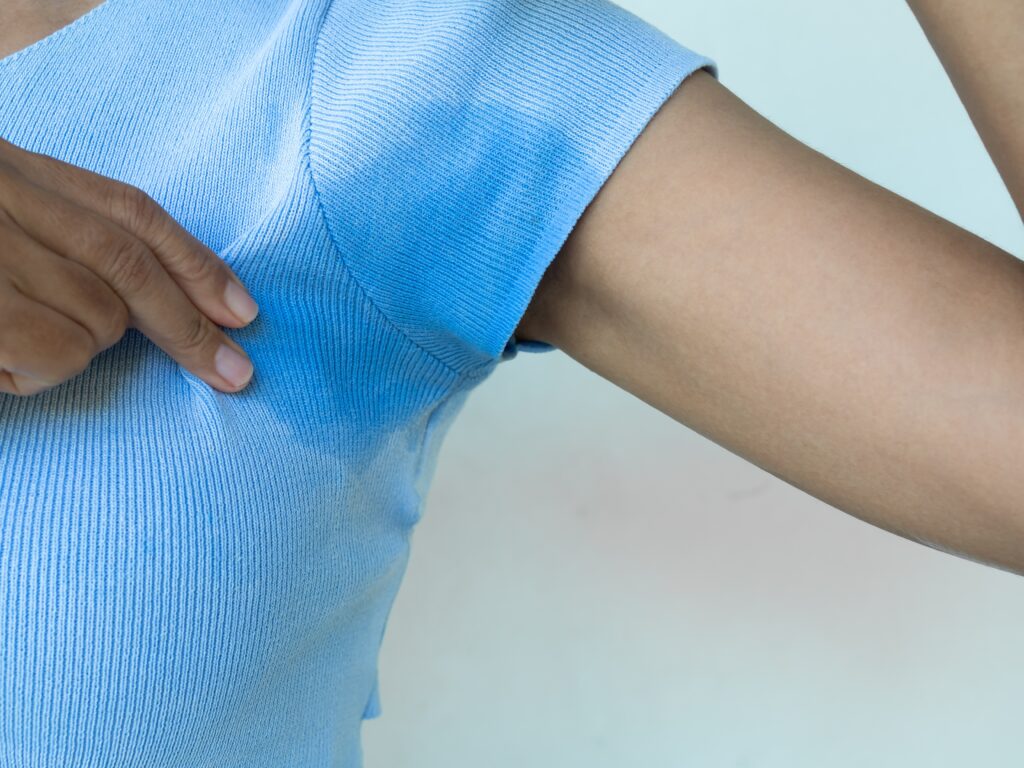At Arlington Dermatology, we’re passionate about helping our patients find relief from a wide range of skin conditions. One common issue that many people face, and is especially challenging during the warm summer months, is hyperhidrosis, or excessive sweating. This condition can be frustrating, whether it’s the heat of summer or when wearing heavy clothes in winter. But don’t worry—we’re here to provide you with effective and safe treatment options and answer any questions you have along the way!
What is Hyperhidrosis?
Hyperhidrosis is a condition characterized by excessive and uncontrollable sweating, far beyond what’s necessary to regulate body temperature. While physical exertion or a warm environment can trigger sweating, those suffering from hyperhidrosis sweat nearly all the time, even in a calm or chilly atmosphere.
Why is Hyperhidrosis a Concern?
Hyperhidrosis is not just an embarrassing issue but also a health risk. It can increase the risk of skin conditions like infections and ingrown hairs and can seriously impact one’s emotional well-being and quality of life.
Treatment Options for Hyperhidrosis
At Arlington Dermatology, we offer multiple treatment options for hyperhidrosis based on its location, severity, and patient preference.
Antiperspirants
An over-the-counter or prescription antiperspirant is often the first line of treatment, typically containing aluminum salts that plug sweat ducts, thereby minimizing sweating. Prescription-strength antiperspirants sometimes work better than traditional or mild antiperspirants because they contain higher concentrations of active ingredients.
Botox
Botox is a neuromodulator that is commonly used to treat signs of aging on the face, like frown lines, by disrupting the nerve signals that cause the facial muscles to contract and wrinkle the skin. When injected into the sweat glands, particularly of the armpits, hands, or feet, Botox temporarily blocks the nerves that activate the sweat glands.
Oral Anticholinergics
Oral anticholinergics work in a similar way to Botox by blocking the action of acetylcholine, a neurotransmitter that stimulates sweat production. Rather than being injected, oral anticholinergics are pills taken daily by mouth. They are generally prescribed when topical treatments have been ineffective or an individual has generalized sweating all over the body.
Glycopyrrolate (Topical)
Glycopyrrolate (topical) is another form of a prescription anticholinergic that is used to treat excessive sweating. This form of treatment is topical and works similarly to oral anticholinergics but is applied directly to the skin area where excessive sweating occurs and thus is better for more localized excessive sweating.
Tap Water Iontophoresis
Tap water iontophoresis is a non-invasive treatment that uses a mild electrical current passed through tap water to reduce excessive sweating, on the hands, feet, and underarms. This method is believed to work by temporarily blocking the release of sweat from sweat glands, offering relief from excessive sweating when used regularly.
miraDry
miraDry is a non-invasive in-office treatment that uses thermal energy to target and permanently reduce sweating in the underarms. It is different from the alternative treatment methods listed above as it can result in a permanent decrease in sweating under the arms, but is typically not covered by insurance.
Schedule a Consultation
With a variety of treatment options available, you do not have to settle for living with the discomfort and inconvenience of hyperhidrosis. At Arlington Dermatology, we are committed to guiding you on your journey to better health and improved quality of life. Don’t hesitate to schedule a consultation with our specialized team by filling out an online contact form today or calling our office at 703-259-9561.




